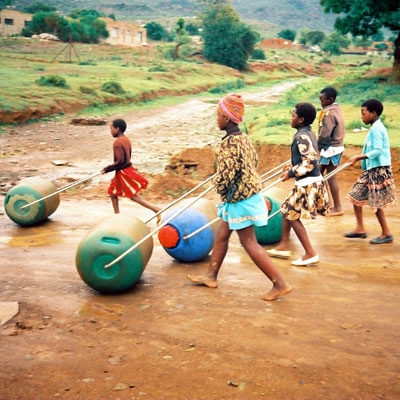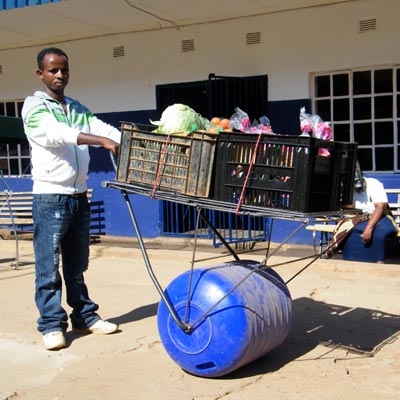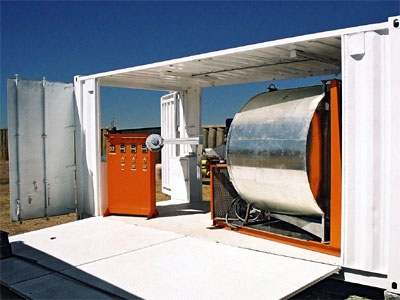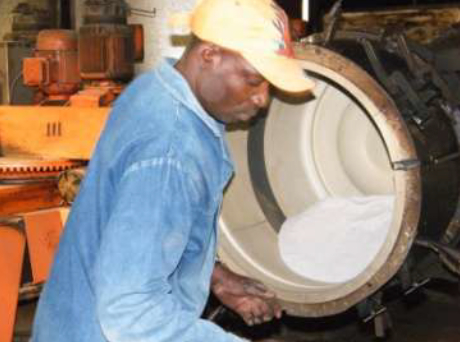Difference between revisions of "Hippo roller"
(→Field experiences) |
(→Field experiences) |
||
| Line 46: | Line 46: | ||
* [http://hipporoller.org/communities/southern-africa/hippo-rollers-to-improve-efficiency-for-small-scale-farmers-in-zambia.html Hippo rollers to improve efficiency for small scale farmers in Zambia.] | * [http://hipporoller.org/communities/southern-africa/hippo-rollers-to-improve-efficiency-for-small-scale-farmers-in-zambia.html Hippo rollers to improve efficiency for small scale farmers in Zambia.] | ||
* [http://hipporoller.org/water-blog/hippo-roller-handover-by-his-majesty-king-goodwill-zwelithini/ 350 Hippo rollers handed to 8 remote communities in the Eastern Cape.] | * [http://hipporoller.org/water-blog/hippo-roller-handover-by-his-majesty-king-goodwill-zwelithini/ 350 Hippo rollers handed to 8 remote communities in the Eastern Cape.] | ||
| − | * [http://hipporoller.org/ | + | * [http://hipporoller.org/event/lusikisiki-transkei-eastern-cape-sa-nedbank-foundation-november-2011/ Lusikisiki, Transkei, Eastern Cape, SA - November 2011: Nedbank Foundation.] |
* [http://hipporoller.org/communities/southern-africa/item/1445-mobile-spaza-rollers-introduced-to-the-eastern-cape.html Mobile Spaza rollers introduced to the Eastern Cape.] | * [http://hipporoller.org/communities/southern-africa/item/1445-mobile-spaza-rollers-introduced-to-the-eastern-cape.html Mobile Spaza rollers introduced to the Eastern Cape.] | ||
* [http://hipporoller.org/communities/southern-africa/item/1443-100-hippo-rollers-for-the-nkunzana-water-project-of-king-goodwill-zwelithini.html 100 Hippo rollers for the Nkunzana Water Project of King Goodwill Zwelithini.] | * [http://hipporoller.org/communities/southern-africa/item/1443-100-hippo-rollers-for-the-nkunzana-water-project-of-king-goodwill-zwelithini.html 100 Hippo rollers for the Nkunzana Water Project of King Goodwill Zwelithini.] | ||
Revision as of 02:53, 12 May 2015


Photo: hipporoller.org

The hippo water roller is a barrel-shaped container. It improves access to water by rolling along the ground. It was specifically designed to alleviate the suffering caused by traditional methods of transporting water in buckets.
Its innovative design provides for a large drum capacity of 90 litres / 24 gallons. Far less effort is required to roll the heavy weight of water (90kg / 200lbs) along the ground than carrying the traditional 20-liter (5-gallon) buckets on the head. The effective weight on level ground is just 10kg (22 pounds).
Currently, all hippo rollers are manufactured in and shipped from south africa. However, exporting completed rollers is expensive, often doubling the cost. A mobile manufacturing unit has been introduced, whereby rollers can be built locally and at a lower landed cost.
Uses
The Hippo roller's main use is to enable people without water on tap to transport water from distant water sources back to their homes.
- The Hippo roller is also used for drip irrigation for example in Zambia where small scale cotton farmers use the Hippo roller to water their crops.
- A wireframe that has been designed to attach on to the roller, transforms the device into a movable casualty bed for the sick or wounded.
- The same wireframe turns it into a transportable ‘spaza’ shop that includes a shade cover as well as a trolley that can be used to transport products to market.
- The Hippo roller has been used in test cases as an anti-personnel demining device, whereby it is rolled along the ground to absorb the blast of landmines when filled with water.
Global and local impact
The aim of the Hippo Water Roller Project is to reduce the number of people without adequate access to water by 1% = 10 million people. So far rollers have been distributed to 21 African countries as well as India, Mexico and South America.
As of June 2012, approximately 42,000 Hippo rollers have been distributed in 21 countries directly benefiting in excess of 300,000 people. 95% of these rollers have been donated or sponsored by corporate businesses as part of their social responsibility programs.
Community rollout
- Sponsorship funding is secured and a recipient community is identified with or without the sponsor.
- The project is introduced to the benefitting community leadership and a mandate to proceed is obtained.
- The handover date is set, and on completion of production, the rollers are delivered to the site.
- At the handover ceremony, community leaders and invited dignitaries address the beneficiaries - Sponsors are encouraged to participate.
- Gratitude is expressed by the community through song and dance routines.
- Rollers are handed over to community and/or household representatives in a predetermined and controlled manner.
Ownership
Beneficiaries are encouraged to contribute towards the cost in cash or in kind as they are able. This promotes a sense of ownership and value. Consequently the rollers last much longer. Any funds collected remain in the community for the benefit of all.
Field experiences
- Hippo rollers to improve efficiency for small scale farmers in Zambia.
- 350 Hippo rollers handed to 8 remote communities in the Eastern Cape.
- Lusikisiki, Transkei, Eastern Cape, SA - November 2011: Nedbank Foundation.
- Mobile Spaza rollers introduced to the Eastern Cape.
- 100 Hippo rollers for the Nkunzana Water Project of King Goodwill Zwelithini.
Videos
Hippo Roller |
Cape of South Africa |
CNN news |
Waterroller Project |
Hippo Rollers |
Roller commercial |
Roller Project |
Local Manufacturing


Exporting completed Hippo Water Rollers to other countries where they are needed is expensive, often doubling the cost of a Hippo roller. Limited quantities fit into a container which severely impacts on shipping costs.
It is more cost effective over the long term to ship one container including a small manufacturing machine and then on-going raw materials as required.
Neighbouring countries are more effectively serviced by a local manufacturer. Local NGO’s requiring small quantities can more easily afford Hippo rollers.
Training in the operation and maintenance of the machine is conducted in South Africa.
Creating a Hippo Roller
Stage I -Loading/Unloading station:
- Raw material (polyethylene powder) is loaded into each mould-set (drum & screw cap).
- On completion of the cycle the moulds are opened and the completed mouldings are removed.
- New raw materials are added for the next cycle.
Stage II -The Heating station:
- With the moulds inside the oven, the burner fires up and begins to melt the powder inside the moulds.
- During this phase the mould is constantly rotated in a predetermined pattern allowing the molten raw material to flow and take the shape of the mould.
Stage III -The Cooling phase:
- While the moulds continue to be rotated they are cooled down by blowing air and spaying water .
- The molten raw material solidifies in the shape of the mould.
Finished product:
- The completed mouldings are removed from the mould and any excess material is scraped off.
TO PURCHASE OR LEARN ABOUT LOCAL MANUFACTURING: Hipporoller.org
